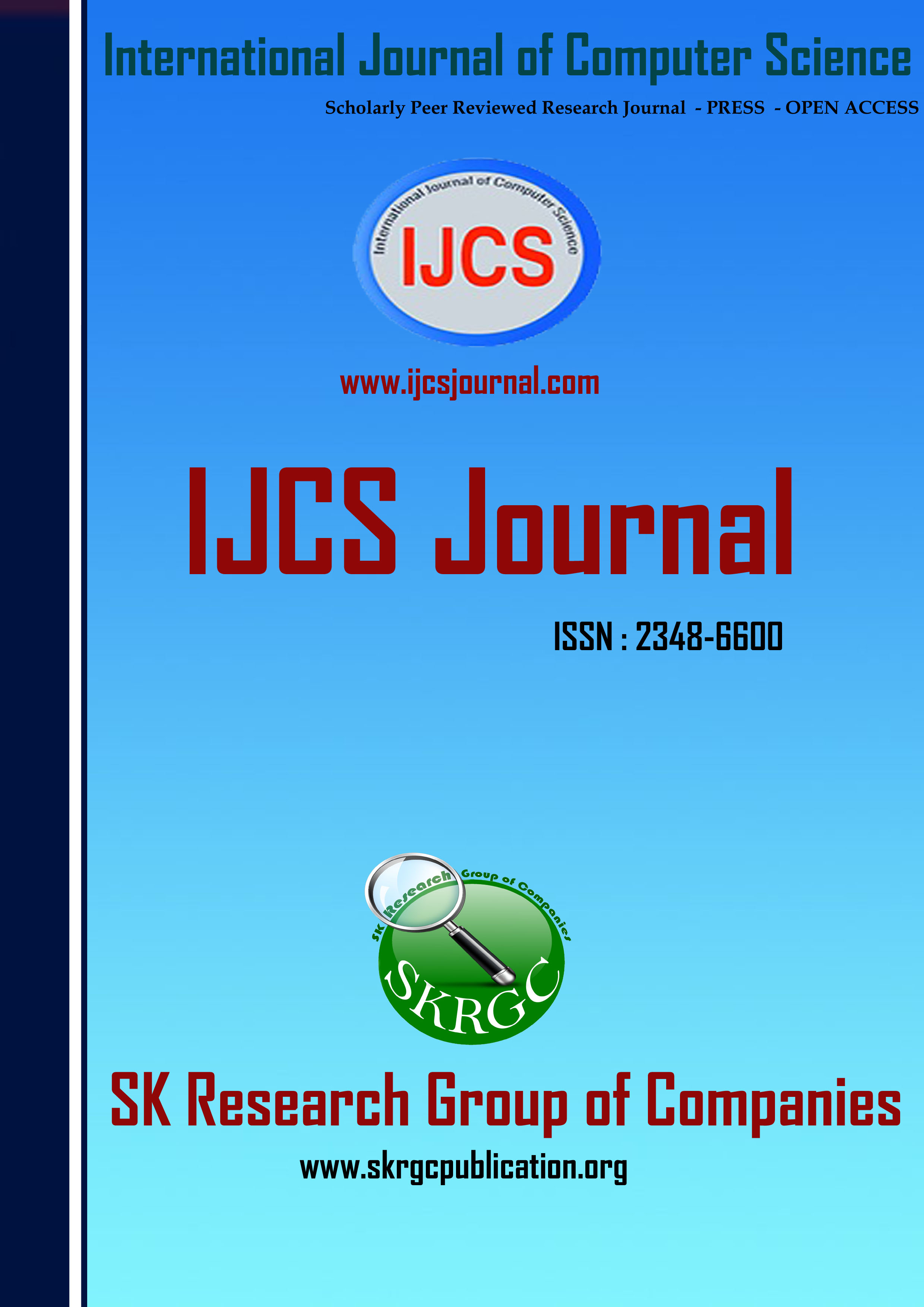A New Approach on Crime Detection with Data Mining and Cloud Computing
International Journal of Computer Science (IJCS) Published by SK Research Group of Companies (SKRGC)
Download this PDF format
Abstract
The increase in the population causes unemployment that makes people to earn money in whatever way against the law. The invention of new technologies and this unemployment problem make the country to move towards the path of disasters. It is an emerging concern about national security, needed to have still more attention to identify the crimes. Intelligence agents, various public and private departments are involved in the process of crime detection and in the enforcement of laws. It is needed to collect data on crimes, classify data according to the crime type, analyzed to identify important areas of crime to concentrated and finally to find the prediction s over the protection of future crimes. The process acquired through the ocean of cloud computing, analyzed in cluster analysis and applied with the various data mining techniques to extract the needed data in the context of law enforcement and intelligence analysis. A model for this process has been designed to organize, analysis, and to make predictions over the data for crime detection.
References
[1]. U,M. Fayyad and R. Uthurusamy, ?Evolving Data Mining into Solutions for Insight,? Comm, ACM, Aug, 2002, pp. 28-31.
[2]. W. Chang et al., ?An International Perspective on Fighting Cybercrime,? Proc, Ist NSF/NIJ Symp, Intelligence and Security Informatics, LNCS 2665, Springer-Verlg, 2003
[3]. Dr. Wendy A. Warr, Wendy Warr & Associates (wendy@warr.com, https://www.warr.com), November 2009.
[4]. J.Han a dM.Kamber, Data Mining: Concepts and Techniques, Morgan Kaufmann, 2001.
[5]. H. Karupta, K. Liu, and Ryan, ?Privacy-Sensitive Informatics, NSF/NIJ Symp, Intelligence and Security Informatics, LNCS 2665, Springer-Verlg, 2003
[6]. M. Chau, J.J Xu, H. Chen, ?Extracting Meaningful Entities from Police Authorship Analysis Techniques to Computer Programs,? Conf. Digital Government Research, Digital Government Research Centre, 2002
[7]. A Gray, P. Sallis, and S.MacDonell, ?Software Forensics: Proc, 3rd Biannual conf, Int‘l Assoc, Forensic Linguistics.
[8]. R.V. Hauck et al., ?Using Coplink to Analyze Criminal-Justice Data,? Computer, Mar. 2002, pp. 30-37.
[9]. T. Senator et al, ?The FinCEN Artifical Intelligence System: Identifying Potential Money Laundering from Reports of Large Cash Transactions,? AI Magazines, vol.16.
[10]. W. Lee. S.J Stolfo, and W. Mok ?A Data Mining Framework for Building Intrusion Detection Models,? Proc 1999 IEEE Symp., Security and Privacy, IEEE CS Press, 1999
[11]. C MeCue, ?Using Data Mining to Predict and Prevent Crimes,? available at: http:/ /www. Spss .com/ dirvideo / richmond.htm?source=dmpage&zone=rtsidebar.
[12]. O. de Vel et al., ?Mining E-Mail Content for Author Identification Forensics,? SIGMOD Record, vol. 30, no.4.
[13]. G. Wang, H.Chen, ?Automatically Detecting Deceptive Criminal Identities,? Comm, ACM, Mar 2004.
[14]. S .Wasserman and K. Faust, Social Network Analysis: Methods and Applications, Cambridge University, Press.
[15]. Huber, F. Matthes, L., Vollhardt, K. Ulbrich D(2006) ?Centre of Market-Oriented Product and Production Management Mainz ISBN:3-938879-13.
[16]. Chau. M, Xu, Chen.H(2002) Extracting meaningful entities from police narrative reports. In Proceedings of the National Conference for Digital Government Research.
[17]. Chen. H., Lynch., ?Automatic construction of networks of concepts characterization of documents databases, IEEE Transactions on Systems, Man,Cybernetics, 22(5).
Keywords
Crime detection, cloud computing, data mining techniques, enforcement of laws, Intelligence agents.

